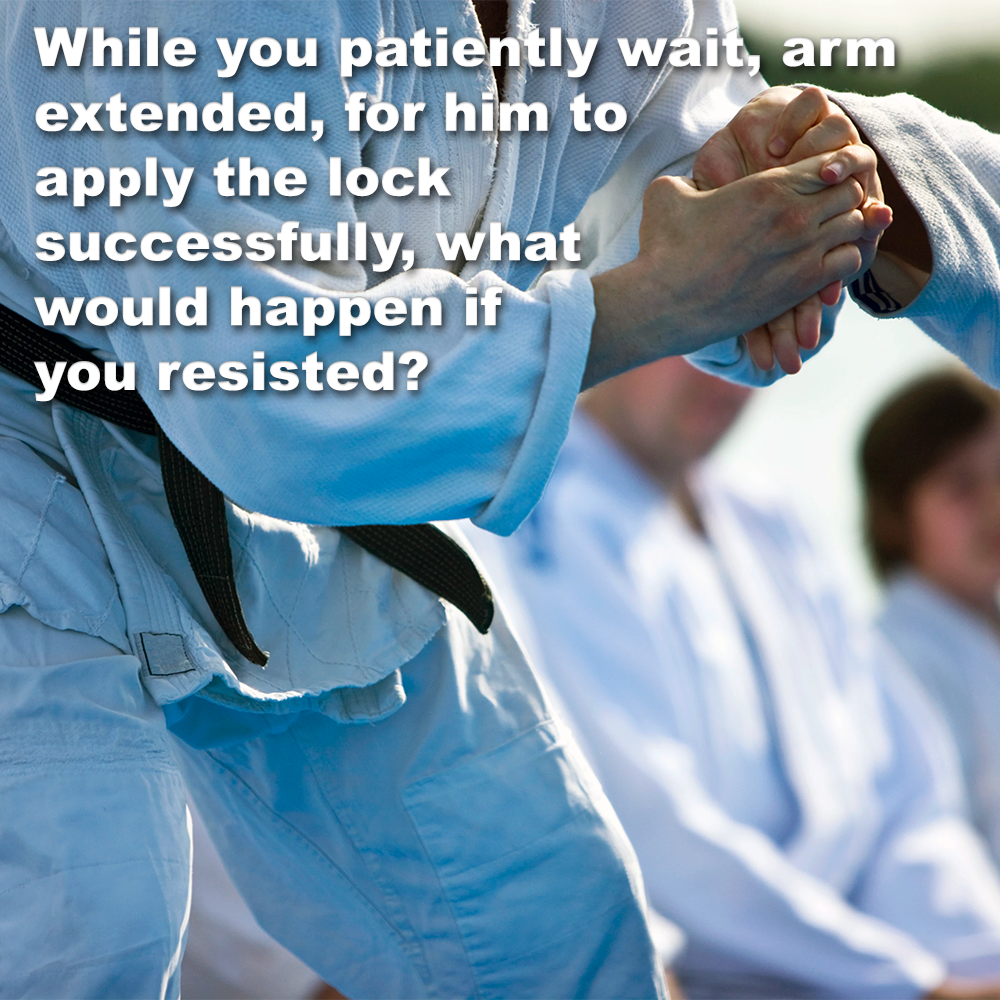
(2 minute 21 second read)
Many martial arts practitioners hold onto the belief that their training translates flawlessly to real-world self-defense. Unfortunately, this can be a perilous illusion.
.
The efficacy of your techniques will often fail when faced with a brutal, violent, resisting opponent. You should not overlook this fundamental fact.
.
As an example, how many times has your instructor asked you to perform a technique upon him while he tries to apply some form of wrist or armlock?
.
But while you’re patiently waiting, arm extended, for him to apply the lock successfully, what would happen if you resisted? If you pulled or pushed away with any force?
.
Trying to attempt locks or throws on a non-compliant attacker without some form of distracting strike, can prove exceptionally difficult.
.
When most people practice self-defense in the dojo, the typical range they adopt is often at long-range, where both of you raise your hands in a guard preparing to fight, waiting to react defensively after being attacked.
.
If you are used to this type of preparation, you may be in for a bit of a shock. And if that preparation includes the execution of a lock or throw, without proper setup or timing, and a partner who is going to resist your attempts, unlike your instructors demonstration, it just isn’t going to work.
.
Unfortunately, some self-defense instruction might not be realistic or helpful in these real situations, potentially putting you at risk.
.
It’s crucial to recognize that locking and throwing skills, are not magical solutions. Neither are the ground techniques, which are advocated by so many, which could prove disastrous in a street altercation.
.
If you decide to attempt a locking technique of any kind, the significance of the size and strength of your attacker cannot be overstated. While these techniques have their place, their effectiveness relies on controlling your opponent, which can be difficult when facing someone significantly larger, especially so if you are used to just passive resistance in your training.
.
Of course, compliance is essential for learning techniques, but this then must be followed by progressive resistance to enhance realism and skill development.
.
Locks and throws, while tempting, can be risky in self-defense. They rely on leverage, balance and more, which fades significantly against much larger opponents who are hell bent on taking your head off.
.
In real-life self-defense situations, where adrenaline is pumping and fear might cloud your judgment, your strength and dexterity can easily falter.
.
That once effective arm-bar or wrist lock that seemed to be so effective in the dojo, in the real world of self-defense, it just isn’t going to work.
.
And brute force won’t help you; it’s about adaptability and intelligence. It’s about reading the situation, assessing your opponent’s size and strength, and reacting with the most effective strategy, not just the one that requires the most muscle.
.
When faced with a clear and immediate threat, sometimes the best way to protect yourself is to act first. Forget waiting for an extended arm, with an untested lock or arm-bar, act decisively with something you know works under pressure.
.
If your technique doesn’t consistently work with resistance and pressure testing, well……… I’ll leave you to fill in the blanks.
.
